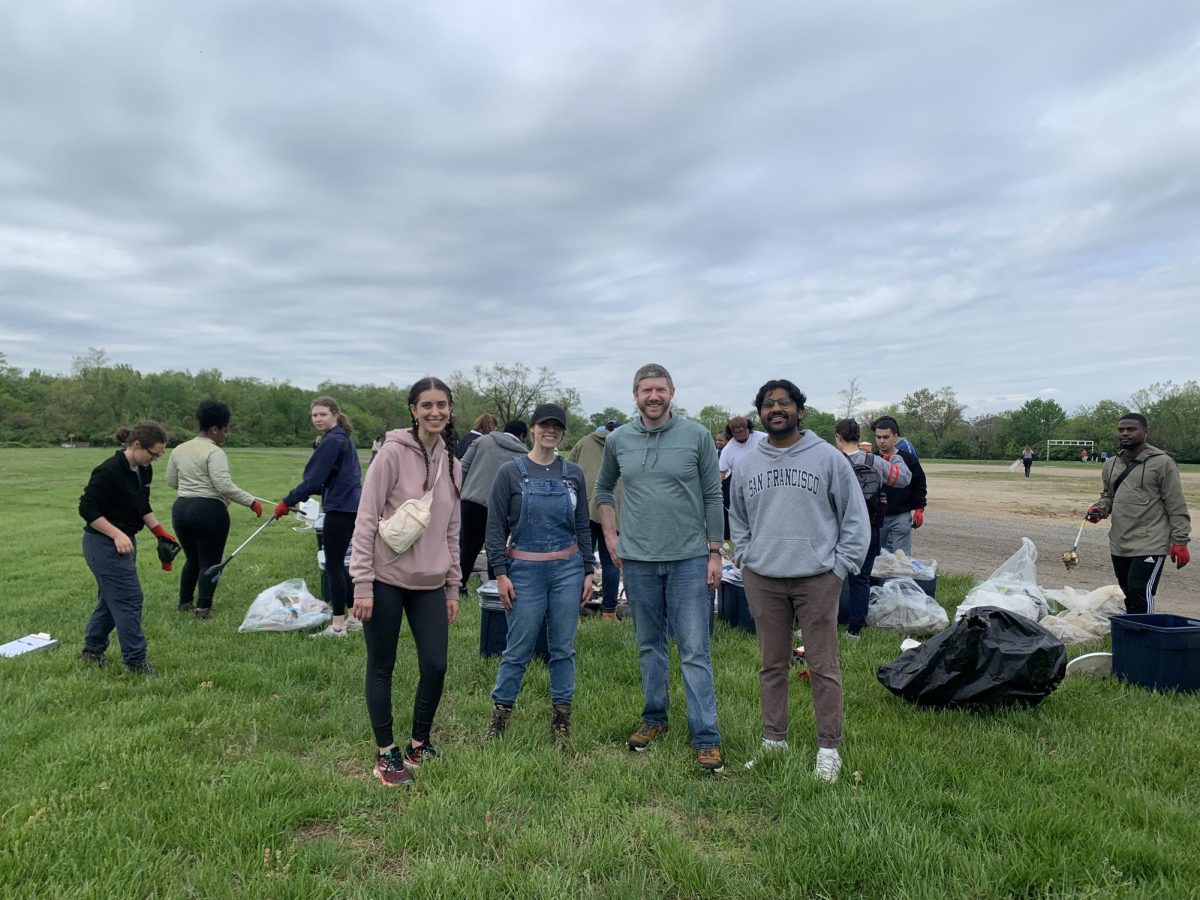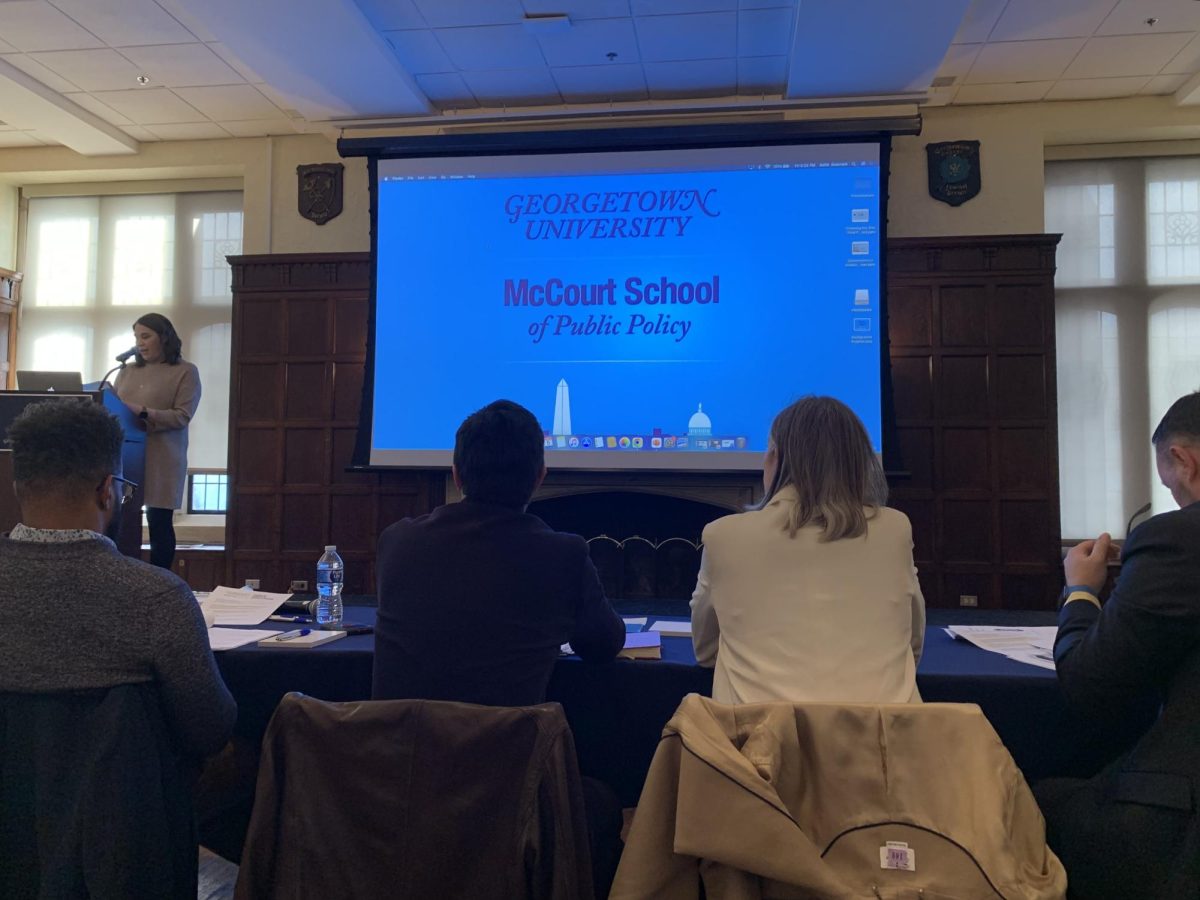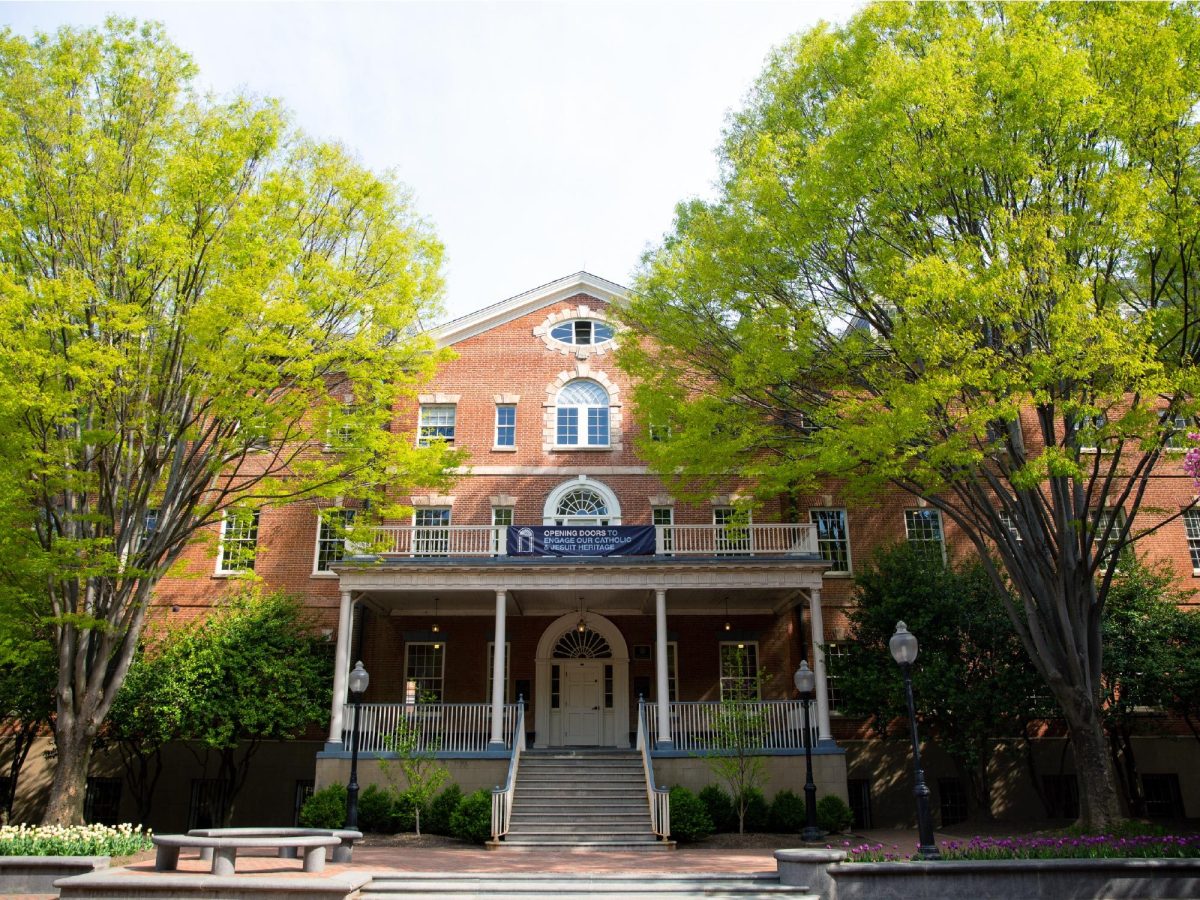A former Georgetown University professor discussed her new book on tar seeps — raw oil rising through cracks in tectonic plates — and climate change in a March 12 event.
Gretchen Henderson’s “Life in the Tar Seeps: A Spiraling Ecology from a Dying Sea” presents the changing ecological life and impact of climate change in Utah’s Great Salt Lake within the context of the artist Robert Smithson’s land art piece “Spiral Jetty.” A former lecturer in Georgetown’s English department from 2015 to 2020, Henderson, who is currently a lecturer at the University of Texas at Austin, discussed the significance of tar seeps to the wider discussion of climate change.
Henderson referred to “Spiral Jetty,” a coil-shaped art piece made out of mud and rocks, as a way of measuring climate change, especially as the jetty’s architecture has changed over the years with the water’s movement.
“I mentioned earlier about it being an inadvertent barometer for climate change,” Henderson said. “You can see how as the lake level has retreated, it has left the jetty fairly high and dry, so it does become a kind of aesthetic measure.”
Henderson said she discovered an interest in both natural and human-made tar seeps, which are found near the Great Salt Lake, following a car accident.
“I went to Great Salt Lake after recovering from being hit by a car in a crosswalk on man-made asphalt, but it took me longer to correlate the lake’s tar seeps of natural asphalt by comparison,” Henderson said. “Nicknamed death traps, tar seams are pools of raw oil that creep up from tectonic fracture.”
Henderson said she was inspired to write the novel when she began observing natural tar seeps in several visits to “Spiral Jetty” in the Great Salt Lake in Utah.
“As I visited the lake again and again, life and death, degeneration and regeneration, injury and healing slowly started to congeal,” Henderson said. “My accident colored the backdrop against which I came to see the lake not as dead but as wildly alive.”
Henderson said her recurring visits to the Great Salt Lake allowed her to appreciate the lake for its beauty rather than its degenerative nature.

“Great Salt Lake is a vibrant living body of water that supports many lives, often dismissed as a dead sea,” Henderson said.
Henderson’s book is meant to follow a spiral pattern through each chapter, like the outward motion of “Spiral Jetty.” The jetty marks changes in the Great Salt Lake’s architecture, and although Henderson referred to it as a barometer for climate change, she mentioned that all land art is prone to change.
“The Jetty, just the fact that they are marking the edge of the landscape as the lake retreats, you see them farther and farther from the shore, so they’re almost like on the measure of that distance,” Henderson said.
Even though tar seeps are known as ‘death traps’ and are frequently seen as negative human-made traps in ecosystems, Henderson said that they are not entirely harmful and can help an ecosystem thrive.
“The first thing is you almost would say they’re a negative thing, like they’re a death trap,” Henderson said. “An unsuspecting animal that crosses a melting seep can get fatally stuck.”
“Even in the years since I started going out there, it actually has changed quite a bit because not as much bird life was migrating through there,” Henderson added. “It’s really an indication of how much life is there.”
Henderson said the change in the structure of the tar seeps at Great Salt Lake illustrates natural changes in the ecosystem from the lake’s ebbs and flows.
“As Great Salt Lake depletes from drought, more tar seeps have emerged along the receding shore,” Henderson said. “The tar seeps fossilized signs of the lake’s abundant life, including pelicans that breed offshore.”
Henderson said signs of natural life can be observed everywhere and that anyone can find an appreciation for nature in their own backyard.
“Interconnections between tar and art, sea and sky, weathered rocks and feathered birds invite reevaluations to reperceive not only an overlooked lake in Utah, but also other underappreciated places across the planet, both far afield and right where we are,” Henderson said.




















